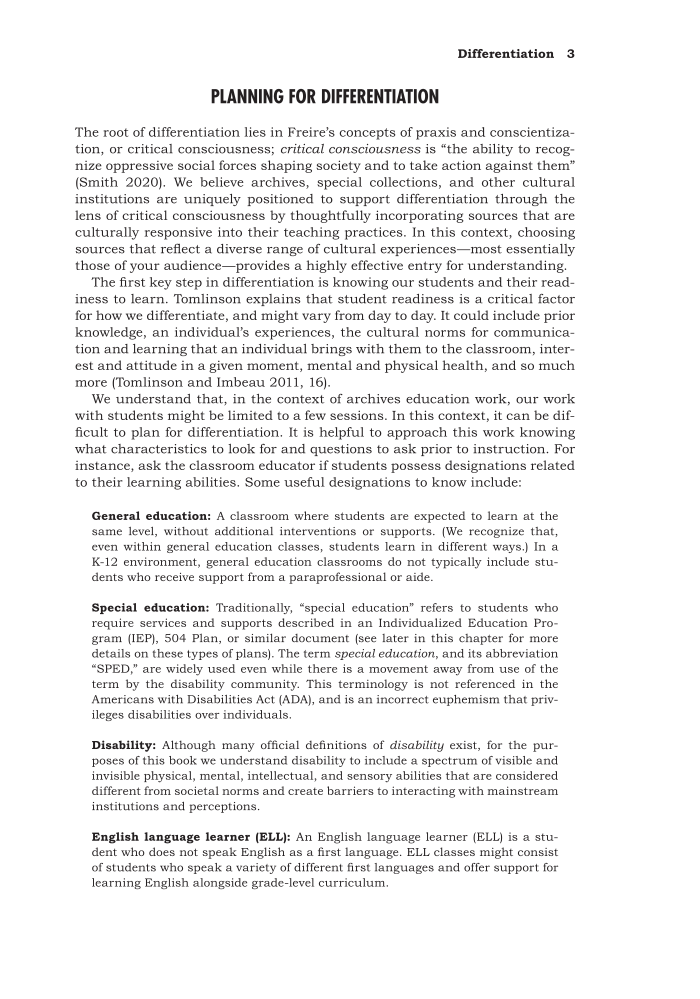Differentiation 3 PLANNING FOR DIFFERENTIATION The root of differentiation lies in Freire’s concepts of praxis and conscientiza- tion, or critical consciousness critical consciousness is “the ability to recog- nize oppressive social forces shaping society and to take action against them” (Smith 2020). We believe archives, special collections, and other cultural institutions are uniquely positioned to support differentiation through the lens of critical consciousness by thoughtfully incorporating sources that are culturally responsive into their teaching practices. In this context, choosing sources that reflect a diverse range of cultural experiences—most essentially those of your audience—provides a highly effective entry for understanding. The first key step in differentiation is knowing our students and their read- iness to learn. Tomlinson explains that student readiness is a critical factor for how we differentiate, and might vary from day to day. It could include prior knowledge, an individual’s experiences, the cultural norms for communica- tion and learning that an individual brings with them to the classroom, inter- est and attitude in a given moment, mental and physical health, and so much more (Tomlinson and Imbeau 2011, 16). We understand that, in the context of archives education work, our work with students might be limited to a few sessions. In this context, it can be dif- ficult to plan for differentiation. It is helpful to approach this work knowing what characteristics to look for and questions to ask prior to instruction. For instance, ask the classroom educator if students possess designations related to their learning abilities. Some useful designations to know include: General education: A classroom where students are expected to learn at the same level, without additional interventions or supports. (We recognize that, even within general education classes, students learn in different ways.) In a K-12 environment, general education classrooms do not typically include stu- dents who receive support from a paraprofessional or aide. Special education: Traditionally, “special education” refers to students who require services and supports described in an Individualized Education Pro- gram (IEP), 504 Plan, or similar document (see later in this chapter for more details on these types of plans). The term special education, and its abbreviation “SPED,” are widely used even while there is a movement away from use of the term by the disability community. This terminology is not referenced in the Americans with Disabilities Act (ADA), and is an incorrect euphemism that priv- ileges disabilities over individuals. Disability: Although many official definitions of disability exist, for the pur- poses of this book we understand disability to include a spectrum of visible and invisible physical, mental, intellectual, and sensory abilities that are considered different from societal norms and create barriers to interacting with mainstream institutions and perceptions. English language learner (ELL): An English language learner (ELL) is a stu- dent who does not speak English as a first language. ELL classes might consist of students who speak a variety of different first languages and offer support for learning English alongside grade-level curriculum.
Document Details My Account Print multiple pages
Print
You have printed 0 times in the last 24 hours.
Your print count will reset on at .
You may print 0 more time(s) before then.
You may print a maximum of 0 pages at a time.























































































































































































